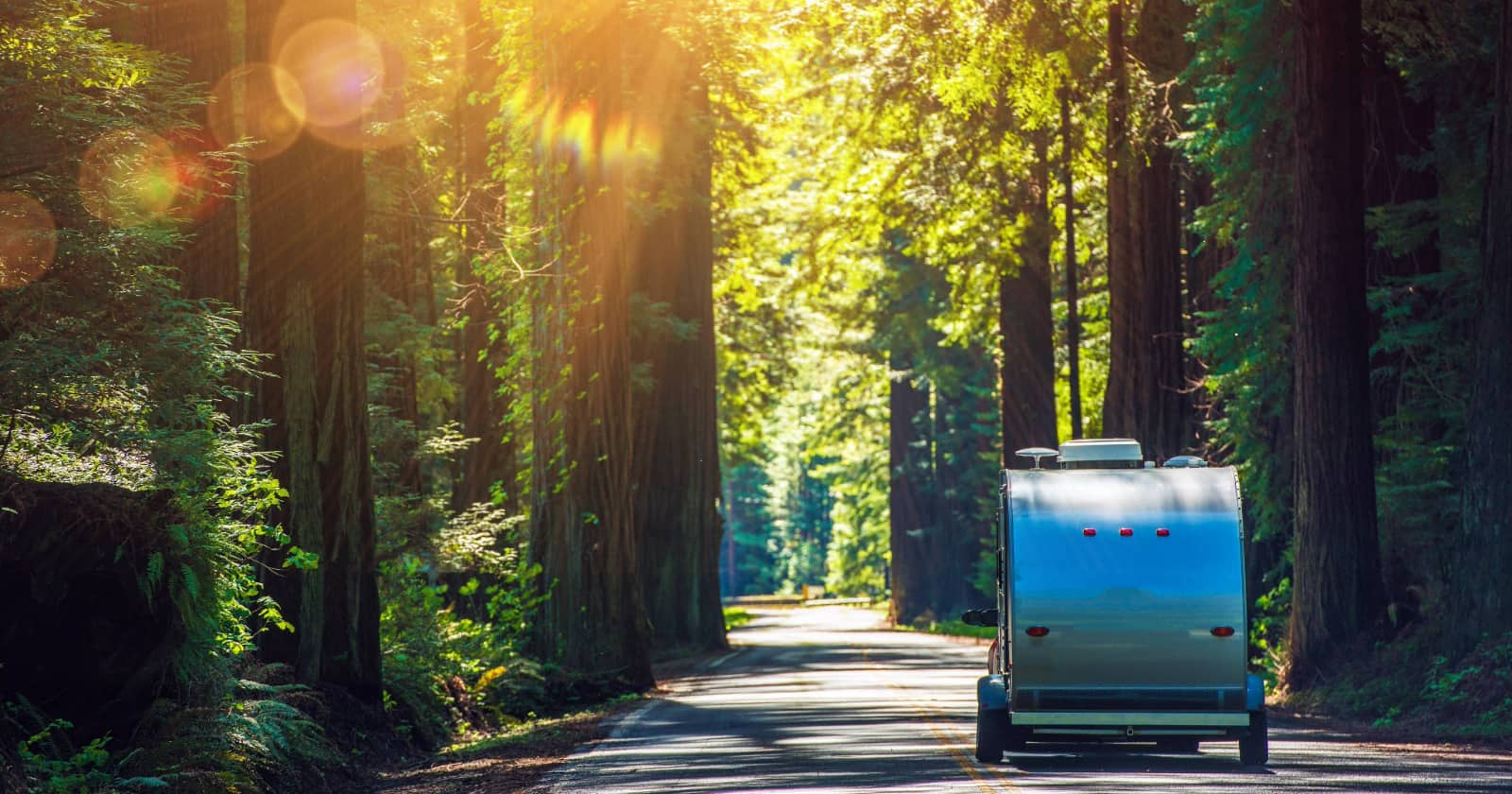
Is It Safe To Use A Tarp On My RV?
With winter fast approaching, it’s time to think about getting our RVs covered up and out of the elements. RVs are susceptible to damage from moisture that can accumulate when seals are damaged.
There are a few ways to protect your RV from the elements. Heated indoor RV storage is the ideal way to store your RV. However, many RVers don’t have access to this RV storage solution for one reason or another.
If you are one of these RVers, don’t despair. There are other things you can do to help protect your RV from the throes of winter. Storing an RV in an RV shelter or using an RV cover are other ways you can go. Another thing you can do is use an RV tarp to help your RV stay safe and dry throughout the winter.
Why you should never use ordinary tarps on your RV
When we are talking about an RV tarp, we don’t mean the big woven poly tarps that are ubiquitous with camping. While campers find all kinds of uses for these around campsites and beyond, you shouldn’t count on them to protect your RV. Here’s why you should never cover your RV with an ordinary tarp:
- A regular poly tarp will damage the surface of your RV. This is because is has a slightly rough surface. This is usually no big deal until the wind picks up and moves it a little. Then the tarp turns into a kind of sandpaper on exterior surfaces, permanently marring the finish.
- Tarps don’t breathe. Any moisture that gets trapped between the tarp and the RV will cause moisture to build up. This is a perfect environment for mold and mildew to thrive.
- Tarps are multipurpose. They aren’t specifically made to fit any RV. You’ll need to find a way to secure it to the RV so wind won’t rip it off.
Benefits of an RV tarp
There are some worthwhile advantages to tarping your RV, including:
- A breathable RV tarp allows air to circulate, so any moisture dries up before it can cause problems.
- Protection from potentially damaging UV rays.
- Allow easier access to get into the RV than an RV cover when you need it.
If you can’t get your RV into a shelter or heated storage, an RV tarp will be better than nothing at all. One thing you should know is that RV tarps are made to perform differently than a regular woven poly tarp. First of all, the RV-specific tarp is made to be strong and moisture-proof, yet still breathable. While a plastic tarp will shred and weaken whenever the wind blows, an RV tarp will resist tearing or shredding.
Waterproof yet breathable
The right tarp for an RV is waterproof but still breathable, allowing air to circulate and moisture to dry up.
RV tarps are made of fabric with millions of tiny pores that are big enough to allow water vapor and moisture to evaporate away from the RV, yet they are too small to allow water droplets to penetrate. With an RV tarp, you don’t have to worry about damaging condensation collecting between the tarp and the RV.
Tips for using an RV tarp
- Always get an RV-specific tarp. Get a tarp that is designed to be sturdy, waterproof, and breathable.
- Measure your RV first. Before you order a tarp, take some measurements first. That way, you won’t end up with an expensive tarp that doesn’t work on your RV. Measure the length and width of your RV and then add 10 feet onto each measurement to help ensure that there is overhang beyond the roof.
- Secure the tarp with bungee cords and ropes. Even moderate winds will cause a tarp to kite, so you always need to tie it securely via its grommets. Make sure it’s tied on tight enough to keep wind from getting under it and tearing it or breaking fasteners.
- Be sure to maintain it. Keep leaves and other debris from settling on your tarp with a leaf blower. Snow should be cleared off quickly, especially since no tarp will protect from the weight of snow.
Get tips from other RVers
Forums such as iRV2.com and blog sites like RV LIFE, Do It Yourself RV, and Camper Report provide all the information you need to enjoy your RV. You’ll also find brand-specific information on additional forums like Air Forums, Forest River Forums, and Jayco Owners Forum.
Related articles:



